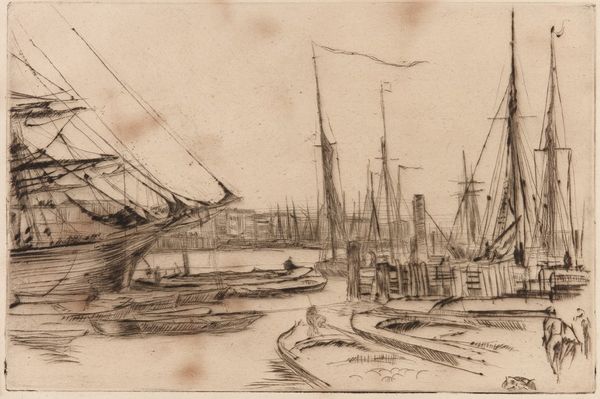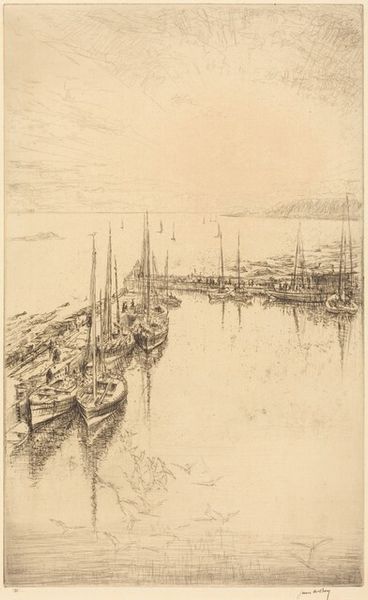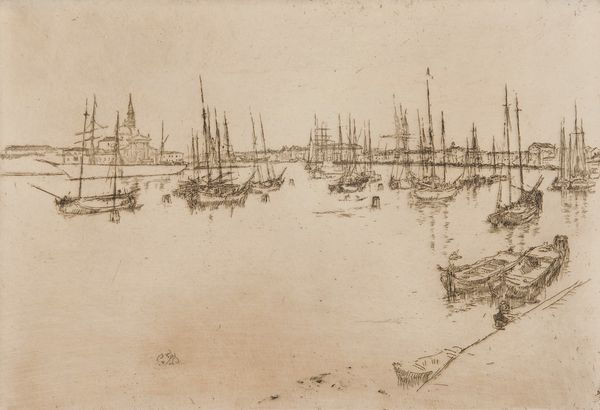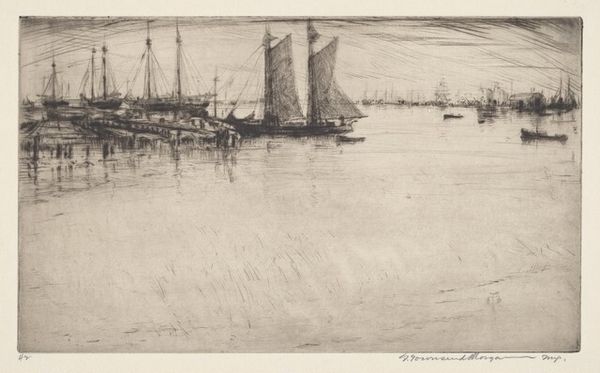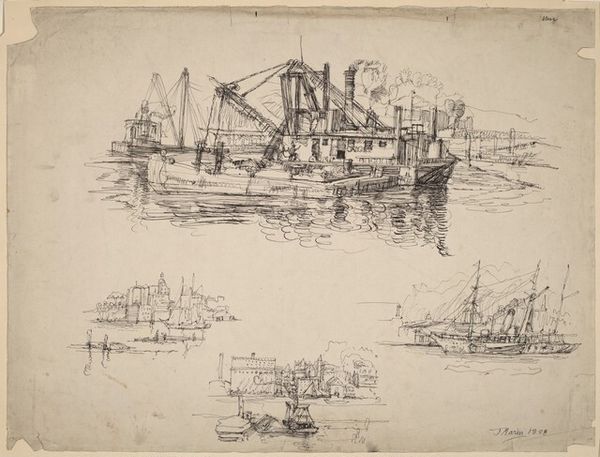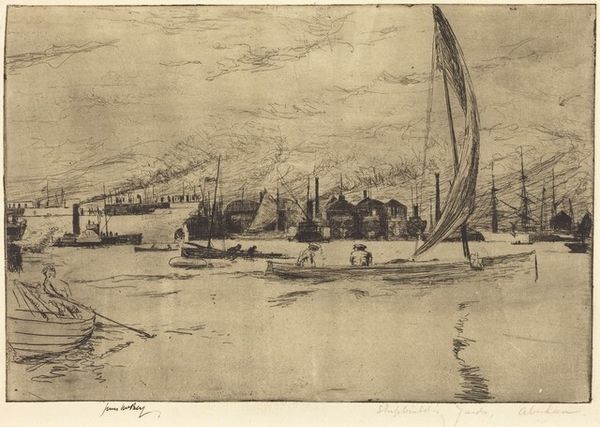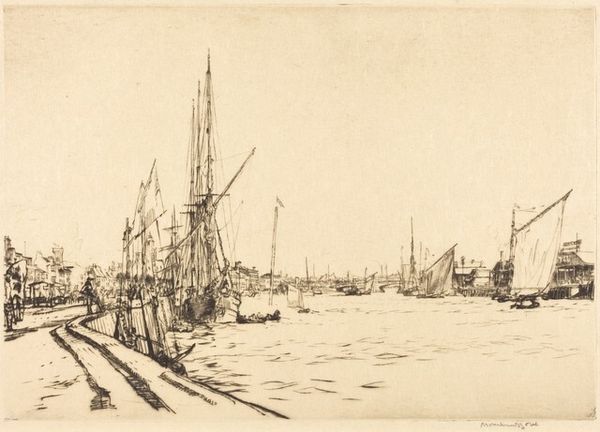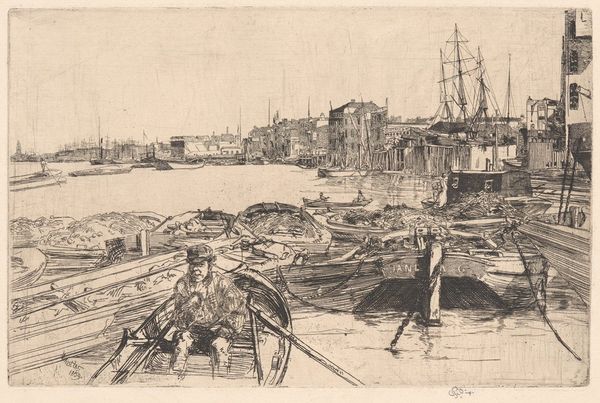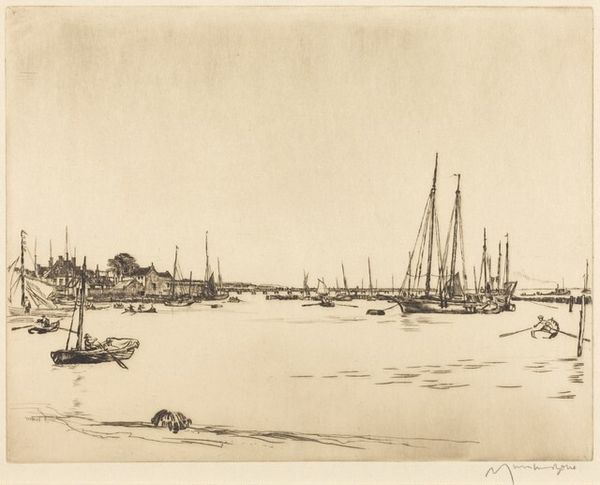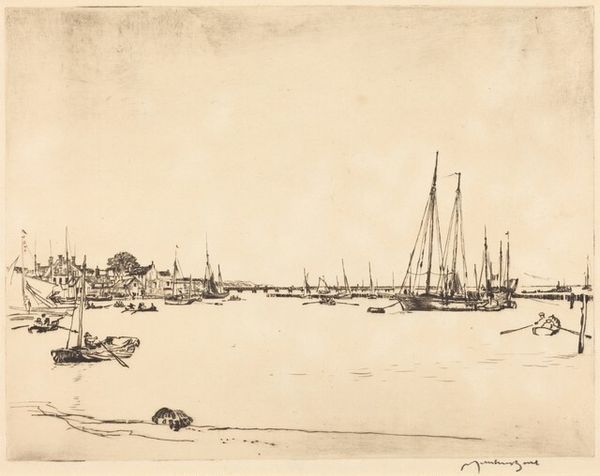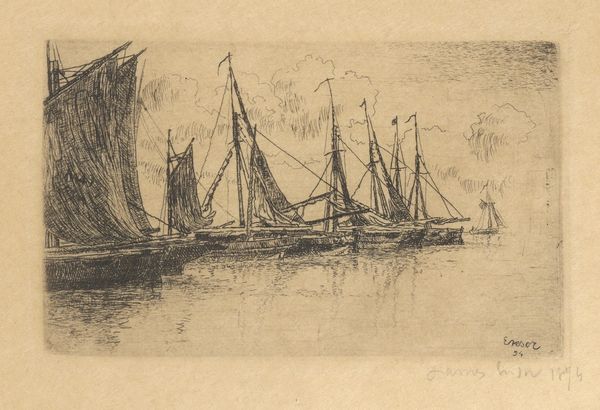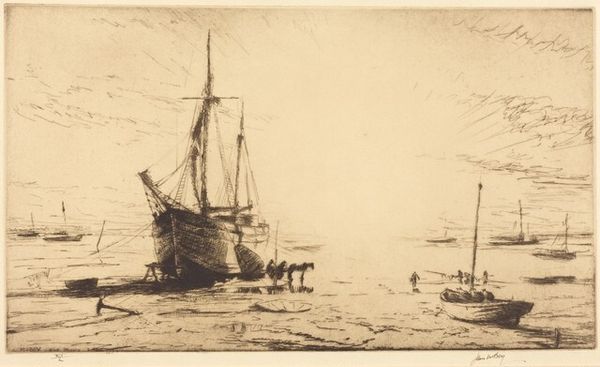
Dimensions: plate: 17.15 × 40.64 cm (6 3/4 × 16 in.)
Copyright: National Gallery of Art: CC0 1.0
Editor: This is Muirhead Bone’s “Glasgow Harbour,” created in 1900 using etching techniques. It has a wonderfully active and industrious mood, depicting the scene using incredibly fine lines and detail. It is overwhelmingly evocative. What stands out to you about this piece? Curator: What strikes me is how this seemingly simple etching actually speaks volumes about Glasgow’s identity at the turn of the century. This wasn’t just a port; it was the heart of Scotland's industrial prowess, the shipbuilding capital. Consider the smoke rising in the background; it’s not just atmospheric, it’s the exhalation of a city at full throttle, complicit in colonial trade, and with a growing labor force concentrated near this vital harbor. Editor: I see what you mean. The ships aren't just ships; they represent the city’s connection to global trade and the lives of the workers loading cargo onto them. It seems as if a specific type of aesthetic is born as a result. Is there a visual style for these types of work? Curator: Precisely! While leaning toward realism, notice how Bone uses impressionistic strokes to convey movement and the almost palpable energy of the harbor, in particular, smoke emerging from the ship funnels, giving depth to the overall image and its purpose. It’s an active aesthetic. By employing such style he romanticized urban toil for consumption, particularly for an emerging middle class interested in documenting societal advancements in that period. What do you make of the limited color palette of black and white? Editor: I now feel as if the grayscale tones further highlight the industrious, work-driven culture of Glasgow, while at the same time making this work universally approachable. I’ll remember that the visual arts do not exist in a vacuum; and the socio-political forces determine how, what, and why they come into being. Curator: Precisely. Examining art like this, situating them in their social, economic, and even political moments of origin adds a new and very interesting layer of appreciation for works of art.
Comments
No comments
Be the first to comment and join the conversation on the ultimate creative platform.

